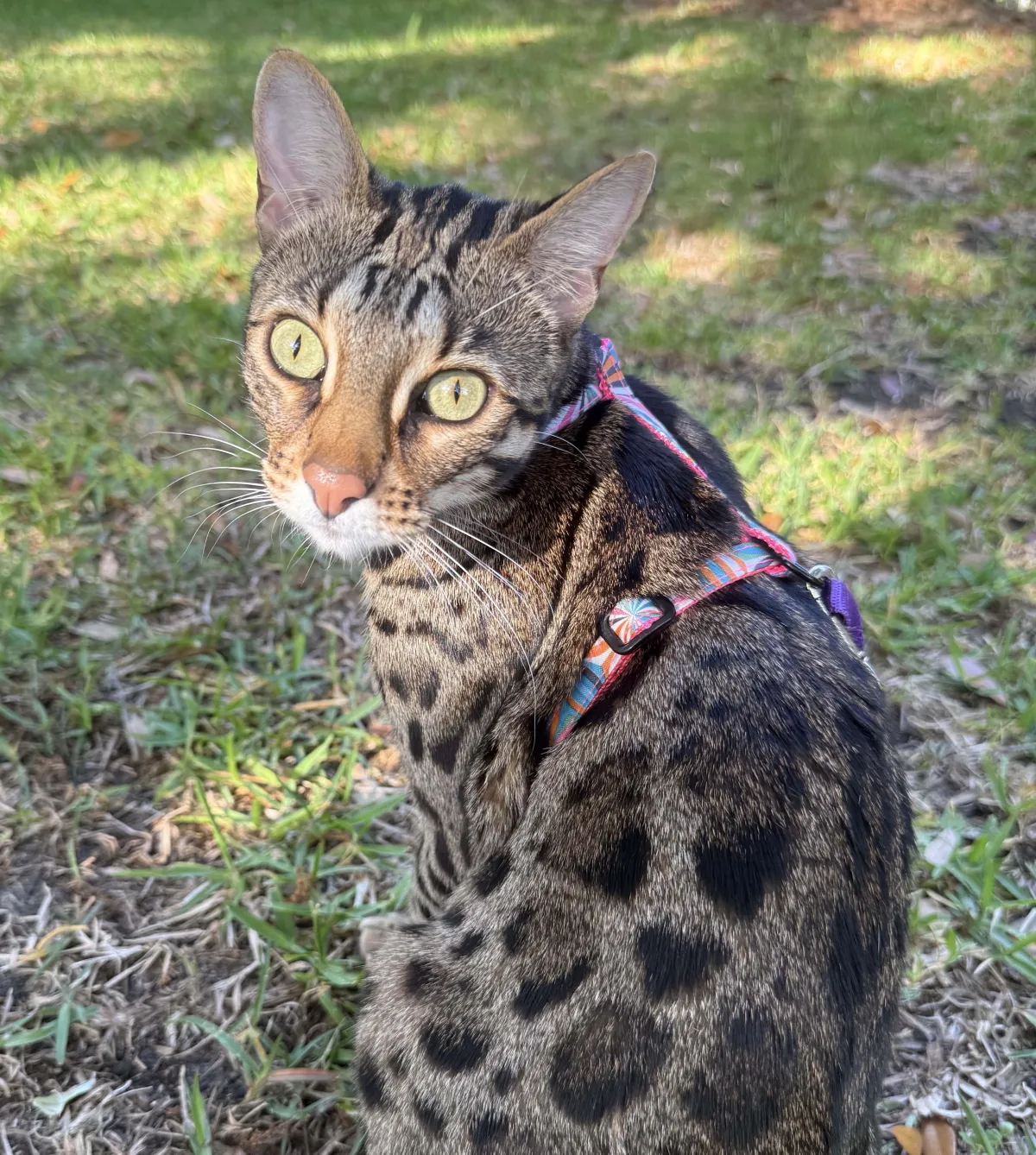
Cat Harness Training: Unlock the Secrets Today
Growing Up in a Harness: Flounder’s Cat Harness Training Journey from Kitten Training to Outdoor Confidence
When Flounder was just a tiny kitten, I knew right away that she was going to be an adventurer and that leash training was going to be a necessity. She had a spark in her eyes and a bold curiosity that was too big to keep indoors forever. So, I started harness training her early—using a ferret harness of all things. It was small enough to fit her little body and was a great way to give her freedom to explore safely. To my delight, it didn’t phase her even a little bit. She strutted around like she’d been wearing one her whole life.
As she grew, I transitioned her into a proper cat harness. Again, no problem with this next step. Flounder continued to enjoy our outdoor adventures together, sniffing every flower, chasing bugs, and soaking in the sunshine. Exploring the great outdoors became one of her favorite parts of the day.
But as with all things, time brought change.

Leash and Harness Adaptations in Cat Harness Training
Recently, Flounder began to act differently when it was time to go outside. She’d see the harness in my hand and immediately run and hide under the bed. It broke my heart—especially because I knew how much she loved being outdoors. After a little investigating, I realized that her old harness just wasn’t fitting right anymore. It had aged, lost its shape, and clearly wasn’t comfortable. But there was something else going on, too.
It was almost like she had grown out of it emotionally, not just physically. I honestly believe there was a psychological shift happening. Flounder, now a confident and capable adult cat, seemed to associate her old harness with being a baby kitty. In her mind, harnesses were for kittens—not independent, dignified cats like herself. And while that’s incredibly cute and a little funny, it posed a very real problem: we live in an area with actual alligators who would love to make a snack out of a feline like her. Going outside without a harness? Not the best way to be safe.
So, I did some research and found a new style of harness—one that was more flexible, had straps that weren't bulky, allowed her front legs to have full range of motion, it was more breathable, and overall just a better fit for Flounder’s grown-up self. But I didn’t stop there. I paired the new harness with positive association training. Instead of springing it on her, I made the harness part of her routine again—with treats, praise, and patience.
And guess what?
Flounder now asks for her harness when she wants to go outside. She’ll sit politely by the door, waiting for me to put it on. The once-feared harness is now her ticket to adventure again.
It’s been such a beautiful reminder that just like people, animals grow and change. Their preferences shift, and what once worked might not always work forever. But with a little creativity, compassion, and patience, we can help them continue to thrive—safely and happily.
Flounder is back to being my little explorer. Only now, she’s an explorer with opinions, preferences, and a clear sense of self. And I wouldn’t have it any other way.

